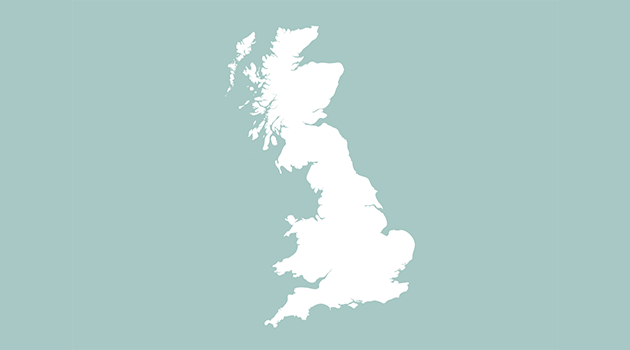Infrastructure is something very visible and tangible contributing to productivity, economic activity and people’s wellbeing. It is essential in attracting foreign direct investment and for regional investment, the OECD says. Done well, infrastructure projects last generations and inspire others to great things.
UK transport infrastructure spending as a share of gross domestic product (GDP) has declined from the mid-1990s and is now lower than in Canada, France and Switzerland, according to the OECD.
Yet the UK has a long history of magnificent, enduring infrastructure projects. St Pancras International station and the Elizabeth Line (Crossrail) are just two recent examples of successful transport infrastructure projects.
Defining and regularly renewing a national infrastructure strategy has not been a strength of recent Conservative governments, if progress of industrial strategies such as the Northern Powerhouse are anything to go by. Despite the UK’s rigorous network regulation framework, uncertainty over policy has held back private infrastructure investment resulting in delays and escalating costs in the provision of infrastructure projects.
Although it will finally open this year, the Elizabeth Line was repeatedly delayed and went another £450m over budget last year. The transport scheme’s original budget was £14.8bn, and originally due to open in December 2018. It is expected that the final cost will be in excess of £18bn.
Critically though, both projects are London-based, when it is the rest of the UK that needs inward investment. More than 50 years of focused investment on the capital and the south-east of England has left the rest of the UK out of kilter in critical indicators such as life expectancy, job opportunities, home ownership and salary growth.
Research by the Institute for Fiscal Studies shows labour productivity is far higher in London and surrounding areas such as Basingstoke and Swindon than in the rest of the country. Although the most productive city in the north-west, Preston is nearly 30% less productive than London. The most productive city in the north-east, Sunderland, is 20% less productive than London.
The IFS says the government’s aim of increasing pay and productivity in every part of the UK will be especially challenging given stagnation since 2008. Labour productivity rose by just 0.5% a year on average since 2008, while real average earnings had only just recovered to their pre-2008 levels before the pandemic hit.
The government’s Levelling Up White Paper, published in February, however ,is viewed as a long-term industrial policy aimed at greater devolution and awarding more decision-making powers to regional administrations, as well as attracting private investment to achieve these ambitious infrastructure plans. It couldn’t have come sooner.
However, there have been small pockets of regional success thanks to devolved mayoral administrations such as Manchester. And the success of investing in cities with the aim of that prosperity trickling outwards seems to be something the government wants to build on.
Ministers have earmarked 20 towns and cities for a £1.5bn regeneration programme as part of the government’s Brownfield Fund. Sheffield and Wolverhampton will be the first of 20.
But as Nigel Wilcock, Executive Director of the Institute for Economic Development (IED), says: “The poster child of where has achieved the most is often seen as Manchester. For about 10 or 15 years it was a city region where organisations had learned to work together, and that takes time. It had strong leadership under Sir Howard Bernstein [former Chief Executive of Manchester City Council], a knowledge and understanding of Westminster politics and strong cooperation with government at the time.”
Some critical infrastructure projects that tie into the government’s net zero goals have already been trialled, such as new energy infrastructure.
The north-east and north-west are regions that have suffered decades of underinvestment added to the hollowing out of its traditionally strong manufacturing base. But the news earlier this year that the government is to invest £100m in Britishvolt, the car battery manufacturing company to build Britain’s first large-scale gigafactory near Blyth in Northumberland, shows first steps in the right direction.
“The government backing for a new gigafactory is an excellent example of combining support for the automotive industry’s transition to net zero and its levelling up agenda. Not only will the government support help to unlock further private capital for the project but will also provide significant opportunities for more investment and job creation through the wider supply chain and ancillary services,” says James Pincus, PwC partner, PwC’s Energy, Utilities, Resources and Infrastructure Advisory team lead.
By 2024 the factory is scheduled to produce its first batteries, which will coincide well with the rising demand for electric vehicles before the government’s ban on new fossil fuel vehicles. Once at full capacity by around 2028, the factory is expected to employ about 3,000 staff.
Underpinning its planned ban on non-electric cars, the government unveiled its new Electric Vehicle Infrastructure Strategy in March to build a network of 300,000 chargers across the UK by 2030 – a tenfold rise in the country’s public charging infrastructure.
But some think the government needs to do more. “In galvanising and enabling local authorities and private industry to act now, we would like to see it go even further. It’s vital that we close the growing disparity in the cost of EV charging,” says Neil Isaacson, CEO of Liberty Charge.
Currently, at-home charging is billed at the lower 5% VAT rate compared to public charging at 20% VAT, meaning the disparity will affect the 11 million households in the UK without access to at-home charging.
With almost one in every three new cars sold in the UK now electric, the car industry broadly welcomed the government’s announcement but tempered it with concerns over the failure to set fixed targets for EV infrastructure.
Paul Willcox, Managing Director, Vauxhall, said at the time of the announcement: “We feel that it is a missed opportunity to provide certainty to customers by mandating binding targets on the roll-out of the charging infrastructure in the UK. It is essential that infrastructure keeps pace with market demand to remove any customer fears of ‘charging anxiety’.”
The government has also laid out its vision for carbon capture, usage and storage (CCUS) plans, which are critical to the UK net zero targets, and its levelling up plans. Two clusters, both in the north of England, have been announced. The East Coast Cluster across the Humber and Teesside, and the HyNet North West project in Liverpool Bay.
“From an energy perspective, whether it’s the gigafactory or carbon capture and storage, it’s the north of England where the government is focusing investment and encouraging private investments to come alongside,” Pincus says.
A new Integrated Rail Plan for the Midlands and the North, outlining how to deliver HS2, Northern Powerhouse Rail, the Midlands Rail Hub, and major Network Rail projects, was announced last November, but transport leaders in the north felt the plan was “woefully inadequate”, and has led to doubts over government commitment.
Chris Hearld, KPMG’s Head of Regions at KPMG, says: “The Integrated Rail Plan last year downgraded rail investment, including Northern Powerhouse Rail. This has created some doubt about the level of government commitment to infrastructure upgrading which may make it hard to win over some business leaders in the North. All tiers of government will have to work harder and smarter to deliver on infrastructure ambitions.”
So far, northern England seems to be benefitting the most from the major infrastructure projects announced. Although investment is critically needed in these regions, some suggest the Conservative Party is positioning itself for the next general election in a bid to retain the so-called Red Wall seats won from Labour in the last election rather than genuinely levelling up across the UK.
“I do think it does a disservice to the regions of the UK that the favourable decisions have been made along the lines of political change at the last election,” says IED’s Wilcock.
Some business leaders in the south-west of England also feel that the region has been downgraded in favour of the north of England. Tim Jones, Chair of South West Business Council, said at the time that there are “no nuggets in this for the south-west”, and the government was taking a “complacent view of the south-west being safe in government circles”.
The government’s vision and ambition for reconnecting the UK are commendable. But only investing in infrastructure projects that link the parts of the UK based on political allegiances will not achieve the stated goal of levelling up all of the UK. Also, questions over the government’s long-term commitment to infrastructure upgrading and implementation are arising among business leaders, which won’t help secure the vital private investment needed. Still, the UK urgently needs an infrastructure upgrade, and it needs it fast.
Recent articles
Levelling up: making it work
The Levelling Up agenda is hugely ambitious, incorporating everything from infrastructure to education and skills, private investment to public procurement. Many factors must align in order to make a real difference.




